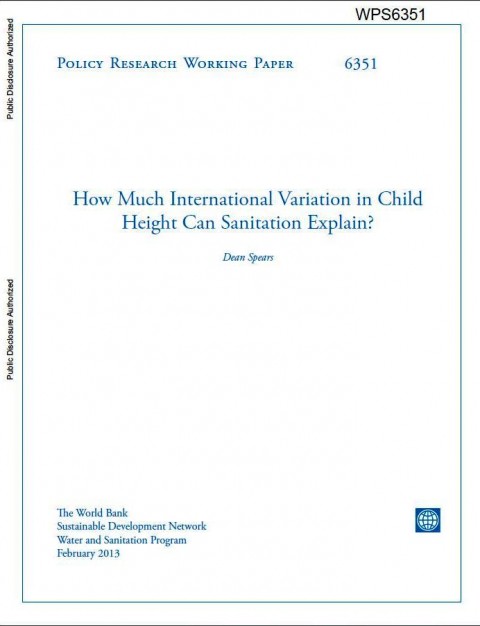How much international variation in child height can sanitation explain? - Policy research working paper
Spears, D. (2013)

Published in: 2013
Publisher:
The World Bank, Sustainable Development Network, Water and Sanitation Program
Author:
Spears, D.
Uploaded by:
SuSanA secretariat
Partner profile:
common upload
11548 Views
135 Downloads
Location of library entry
Content - Summary
Physical height is an important economic variable reflecting health and human capital. Puzzlingly, however, differences in average height across developing countries are not well explained by differences in wealth. In particular, children in India are shorter, on average, than children in Africa who are poorer, on average, a paradox called “the Asian enigma” which has received much attention from economists. This paper provides the first documentation of a quantitatively important gradient between child height and sanitation that can statistically explain a large fraction of international height differences. This association between sanitation and human capital is robustly stable, even after accounting for other heterogeneity, such as in GDP.
The author applies three complementary empirical strategies to identify the association between sanitation and child height: country-level regressions across 140 countryyears in 65 developing countries; within-country analysis of differences over time within Indian districts; and
econometric decomposition of the India-Africa height differences in child-level data. Open defecation, which is exceptionally widespread in India, can account for much or all of the excess stunting in India.
This research working paper is intending to explain variations in height in developing countries by analysing the sanitation coverage. Especially in India, where stunting is much more problematic than in other countries.
Dean Spears has already demonstrated the existence of a causal effect of sanitation on child height (Spears, 2012; Hammer and Spears, 2012). But this paper aims to demonstrate how the variations in child height among developing countries can be explained by differences in statistics of open defecation.
This paper is a product of the Water and Sanitation Program, Sustainable Development Network. It is part of a larger effort by the World Bank to provide open access to its research and make a contribution to development policy discussions around the world. Policy Research Working Papers are also posted on the Web at http://econ.worldbank.org. The author
may be contacted at dspears@princeton.edu.
Bibliographic information
Spears, D. (2013). How much international variation in child height can sanitation explain? - Policy research working paper. The World Bank, Sustainable Development Network, Water and Sanitation Program
Filter tags
East Asia & Pacific English WASH and nutrition (WG12)














